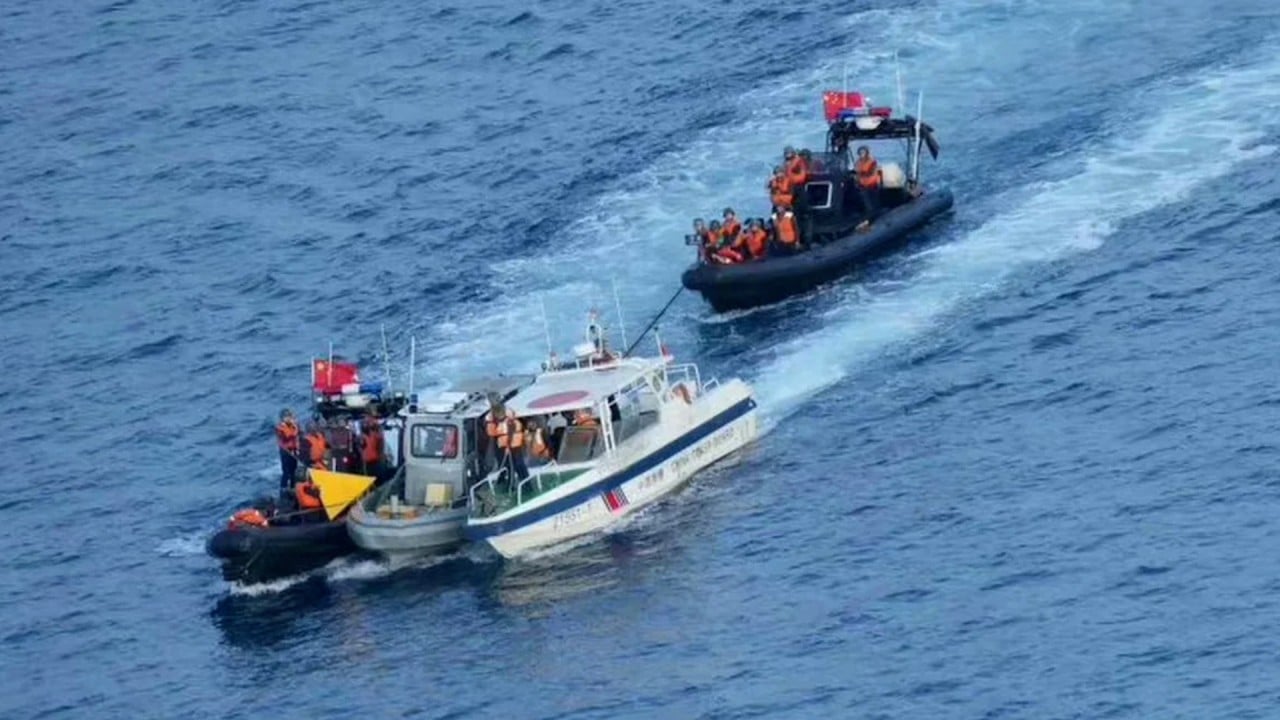Manila and Beijing have been locked in a months-long territorial row in the South China Sea, with the latest skirmish on Monday between the Philippine navy and the Chinese coastguard causing injuries to several Filipinos, including a sailor who lost a finger.
Philippine forces were on a resupply mission to the BRP Sierra Madre, a grounded World War II vessel in the Second Thomas Shoal occupied by their fellow troops. The flashpoint is known to Manila as the Ayungin Shoal, while Beijing calls it Renai Jiao. Both sides claim it is a part of their maritime territory.

Carpio, who played a significant role in the Philippines’ case against China in the Permanent Court of Arbitration in The Hague that was concluded in Manila’s favour in 2016, said the tribunal had no jurisdiction over military activities in the West Philippine Sea, Manila’s name for part of the disputed South China Sea within its exclusive economic zone. The Hague ruling said that Beijing’s claims in the South China Sea, as indicated by its so-called nine-dash line, were unlawful.
“My recommendation is that we could change our presence there from military to civilian. We will build a lighthouse operated by the coastguard. The coastguard is civilian. We can have a substation for the coastguard … let’s say a research centre also,” Carpio told ABS-CBN radio.
While China could try to stop construction of a civilian replacement for the BRP Sierra Madre, Manila could file a complaint to the tribunal and argue the structure was not for the military.
Apart from China and the Philippines, Malaysia, Brunei, and Vietnam also have competing claims to the South China Sea.
On the latest failed resupply mission, the Philippine military accused China’s coastguard of “intentionally high-speed ramming”, resulting in crew injuries. Filipino military officials also reported that Chinese personnel had boarded their vessels and confiscated weapons and other equipment.
Carpio said the Chinese coastguard actions were “against international law”.

“It happened within our exclusive economic zone. There’s sovereign immunity. They cannot get on board, arrest, or seize a warship, including auxiliary vessels,” he added.
Other options Manila can explore for its next resupply mission, according to Carpio, include using faster vessels and – instead of using bladed weapons to diffuse tensions – bringing journalists to document and counter any false information that China may spread.
Chinese takeover?
Political analyst Sherwin Ona, an associate professor of political science at De La Salle University in Manila, told This Week in Asia that Manila needed new ideas to deal with the dispute considering China’s willingness to raise tensions.
“I think that Justice Carpio’s position has merit in terms of Unclos and should be explored together with enhancing our military presence in the Second Thomas Shoal,” Ona said, referring to the United Nations Convention on the Law of the Sea.
However, China – which is a party to Unclos – has rejected the 2016 ruling, insisting it has jurisdiction over the waterways.
“I think we must now look at the worst-case scenario, like the possible boarding of the Sierra Madre and a complete blockade of Second Thomas Shoal. I think this is more pressing for our decision-makers,” Ona warned.
For Jose Antonio Custodio, a defence analyst and fellow at the Consortium of Indo-Pacific Researchers, Carpio’s suggestion marks a long overdue action that the Philippines should have done 20 years ago after it initially ran aground the Sierra Madre.
“The problem now is that it will be more challenging given the overwhelming presence of China in the area. For the Philippines to attempt construction, it must deploy an equally formidable presence to allow the construction teams to approach and work unmolested by the Chinese,” Custodio told This Week in Asia.
“It wasn’t done because the Philippines remained timid and fearful of China. Then during the administration of late former President Benigno Aquino Jnr, any intention of improvement was temporarily shelved because of the arbitration case. Then during the Duterte administration, the pro-Chinese sentiment confused policy planners in the Philippines,” he explained.
For the next resupply mission, Manila could ask for material and intelligence help from Washington but it should maintain its key responsibility of overseeing the garrisons at the Second Thomas Shoal, Custodio said.

Security analyst Joshua Espeña, a resident fellow and vice-president of the International Development and Security Cooperation, told This Week in Asia he disagreed with Carpio on the grounds of adding salt to the wound of the failed optics of Manila’s intention to be assertive in the dispute.
“This ‘retreat’ of putting the PCG instead may have legal sense, and therefore a strategic sense, but it has operational and tactical costs that negate any strategic gain: you cannot build a lighthouse now given how the Chinese have escalated its actions,” Espeña explained.
“Dangerous scenarios of [Chinese] interception and confiscation … will certainly punish this kind of switch suggested by Justice Carpio. This is what loses credibility with deterrence: damage to [Manila’s] morale that Chinese cognitive warfare operatives are already exploiting.”
Espeña said it was time for Manila to put its foot down on its rights, lest it played into the Chinese strategy of displacing Filipinos in the West Philippine Sea.
“In this case, Manila needs both its navy and coastguard to work together,” he said.
The Philippines had always been vocal in its cry for help from the US but the latter had always been ambiguous given its interests, Espeña said.
“Therefore, the Philippines must ask for US assistance for more patrol craft … among other things, but not necessarily triggering the MDT,” he added.


